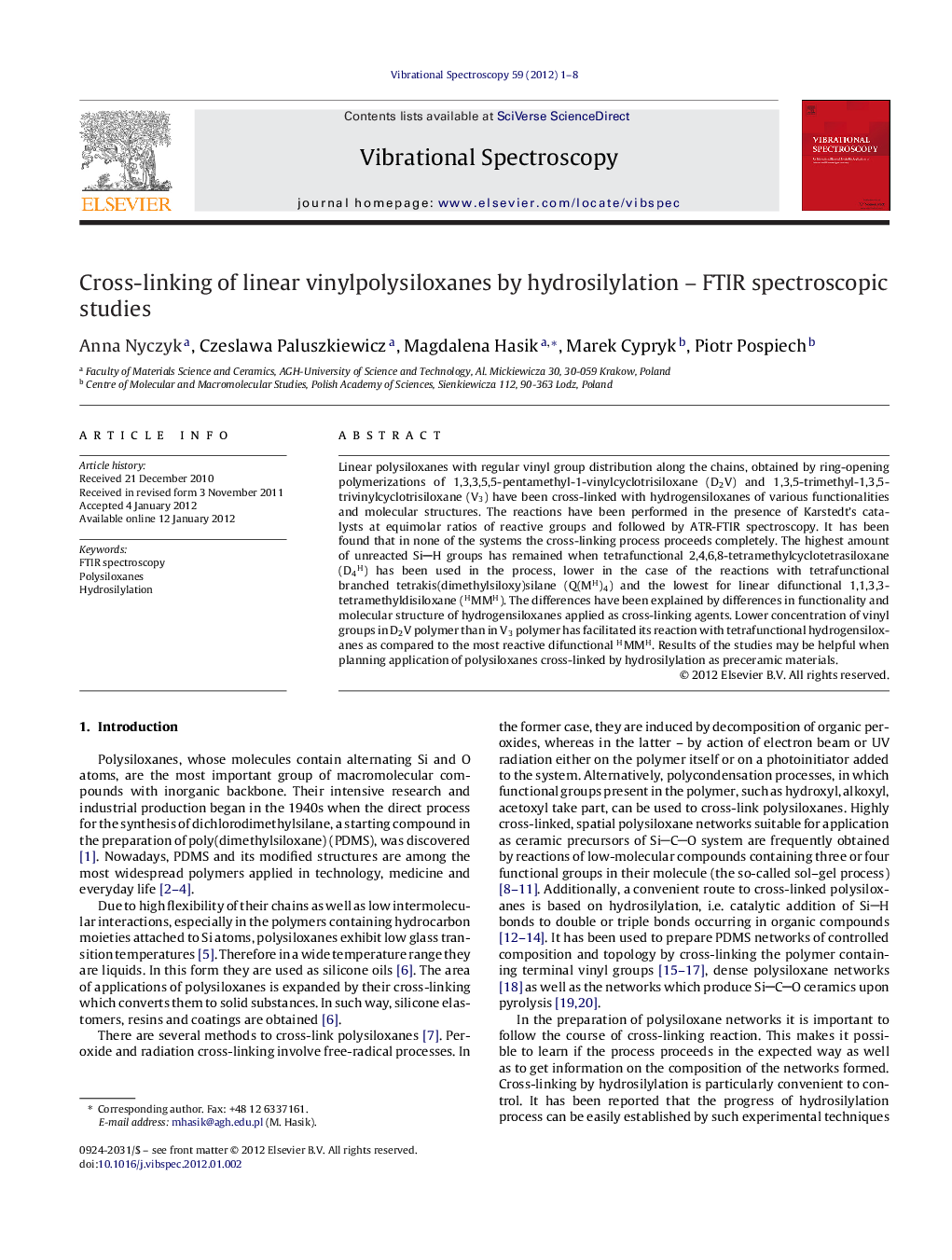| Article ID | Journal | Published Year | Pages | File Type |
|---|---|---|---|---|
| 1251935 | Vibrational Spectroscopy | 2012 | 8 Pages |
Linear polysiloxanes with regular vinyl group distribution along the chains, obtained by ring-opening polymerizations of 1,3,3,5,5-pentamethyl-1-vinylcyclotrisiloxane (D2V) and 1,3,5-trimethyl-1,3,5-trivinylcyclotrisiloxane (V3) have been cross-linked with hydrogensiloxanes of various functionalities and molecular structures. The reactions have been performed in the presence of Karstedt's catalysts at equimolar ratios of reactive groups and followed by ATR-FTIR spectroscopy. It has been found that in none of the systems the cross-linking process proceeds completely. The highest amount of unreacted SiH groups has remained when tetrafunctional 2,4,6,8-tetramethylcyclotetrasiloxane (D4H) has been used in the process, lower in the case of the reactions with tetrafunctional branched tetrakis(dimethylsiloxy)silane (Q(MH)4) and the lowest for linear difunctional 1,1,3,3-tetramethyldisiloxane (HMMH). The differences have been explained by differences in functionality and molecular structure of hydrogensiloxanes applied as cross-linking agents. Lower concentration of vinyl groups in D2V polymer than in V3 polymer has facilitated its reaction with tetrafunctional hydrogensiloxanes as compared to the most reactive difunctional HMMH. Results of the studies may be helpful when planning application of polysiloxanes cross-linked by hydrosilylation as preceramic materials.
